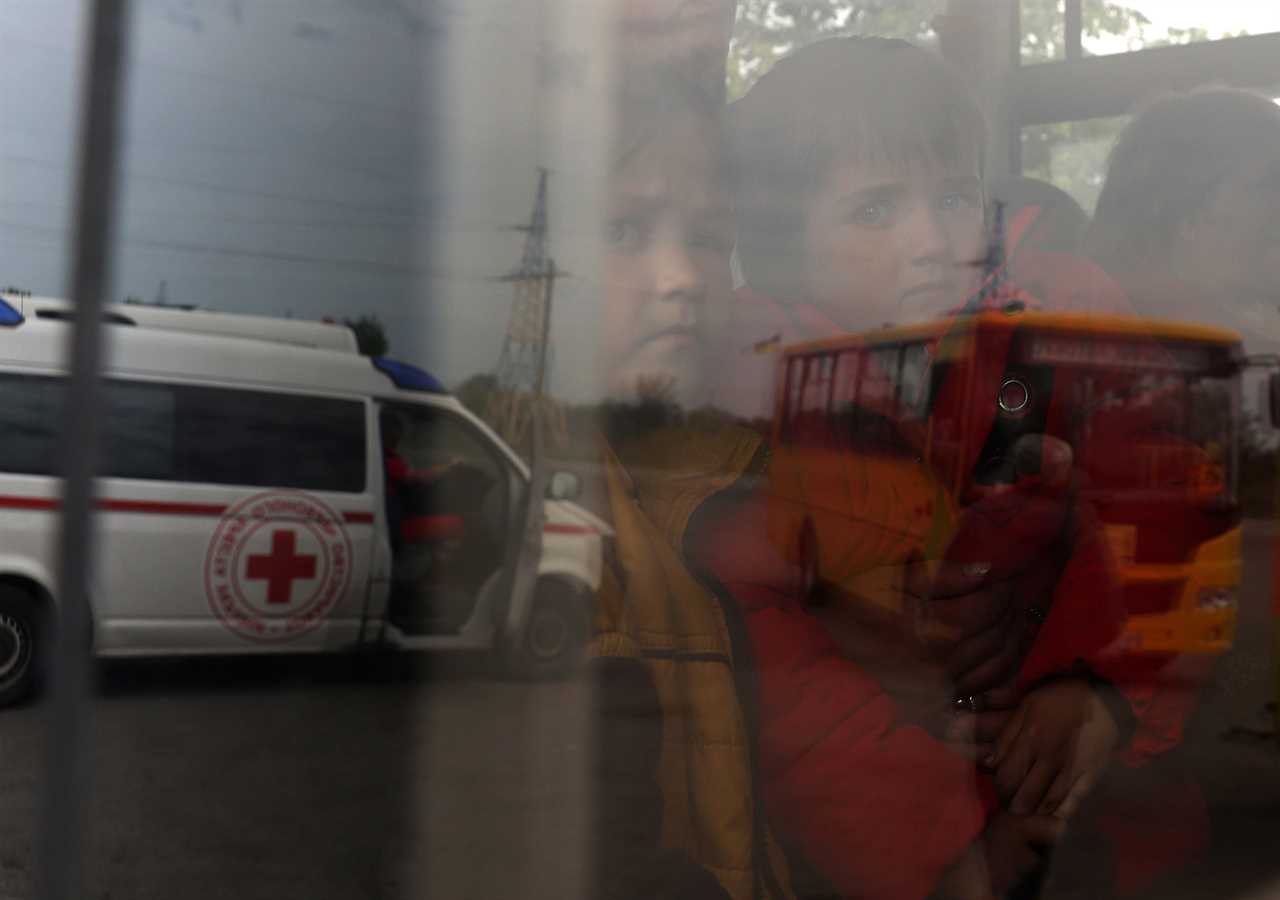
RAIHORODOK, Ukraine — Mark Holtsyev knew the window to rescue desperate residents of Lyman before Russian forces razed the town was closing fast.
The tall, amateur equestrian turned volunteer paramedic jumped in his ambulance and hurtled down the road, past rocket craters and plumes of black smoke rising from the surrounding fields.
Holtsyev is one of dozens of volunteers who have been risking their lives day in and day out, zipping over some of the most treacherous roads of eastern Ukraine’s Donbas region since Russia’s invasion in February. In April, when Moscow shifted its focus and military might to the east, the task grew more dangerous by the day. Now every dash into a beleaguered town here is a serious gamble.
“We managed to rescue 300 people yesterday, 500 the day before. But we’ve only taken 100 today because the fighting is very intense,” said an exasperated Holtsyev between evacuation runs one day last week. “It’s terrible. People are afraid to even move.”
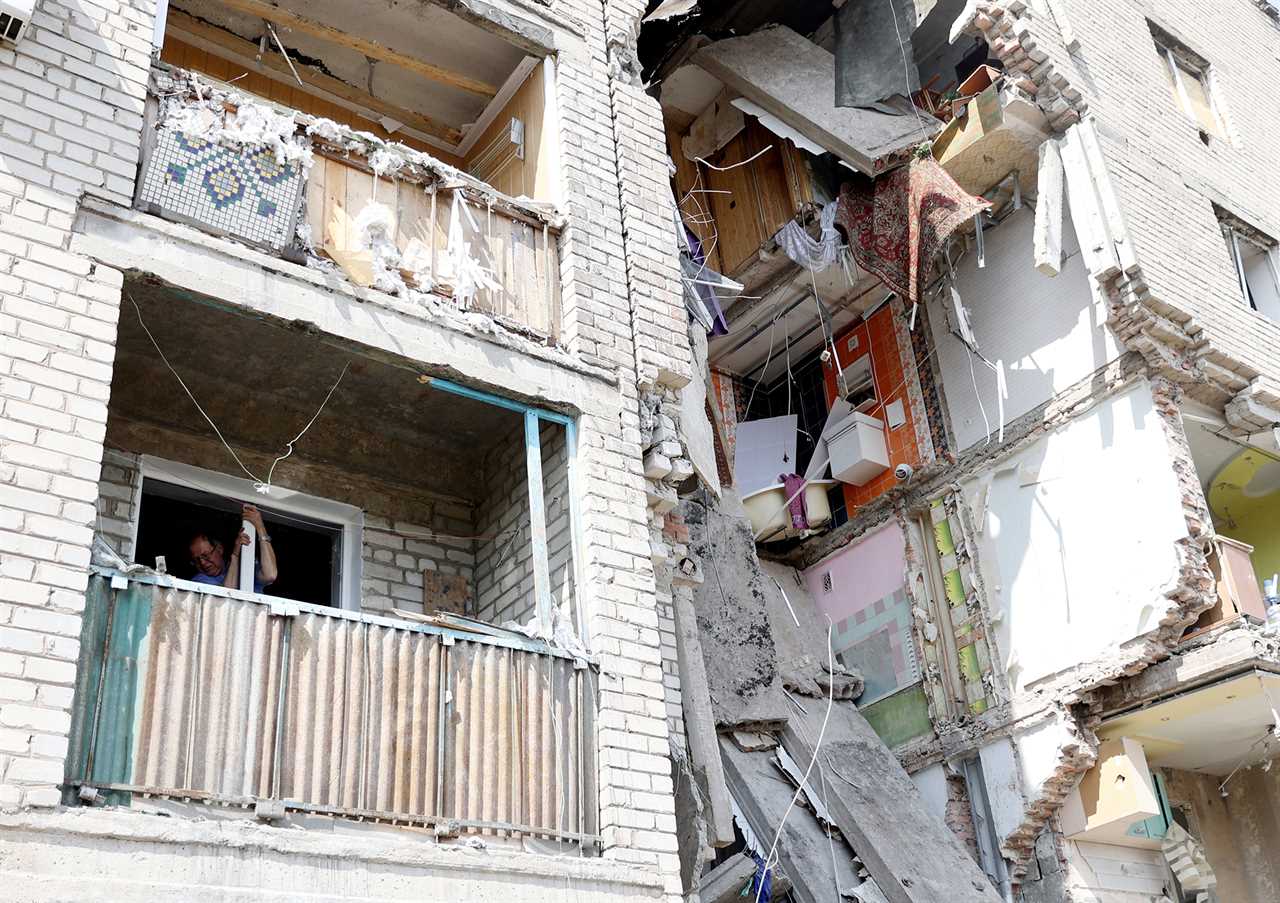
As Russian forces pulverize everything in their path in a scorched-earth campaign to capture as much of the eastern Donetsk and Luhansk regions as possible, eastern Ukraine has largely emptied out. Businesses are boarded up, traffic has disappeared and public squares are lifeless. But tens of thousands of people remain caught in the crossfire with nowhere to go as the battle for the Donbas grinds on. And they are paying a heavy price.
By midday, it had grown so dangerous in and around Lyman that authorities were ready to call off the operation. But Holtsyev and a handful of other volunteers, police officers, soldiers and bus drivers kept at it.
At Raihorodok, a small town on the outskirts of Lyman, they huddled quickly over coffee and cigarettes to discuss their route and confirm the addresses of people they needed to find. Artillery shells were exploding all around and drawing closer every minute. Then Holtsyev and the others jumped back in their cars and raced toward the city.
They arrived back in Raihorodok 40 minutes later with a couple dozen people. They would be the last evacuees of the day.
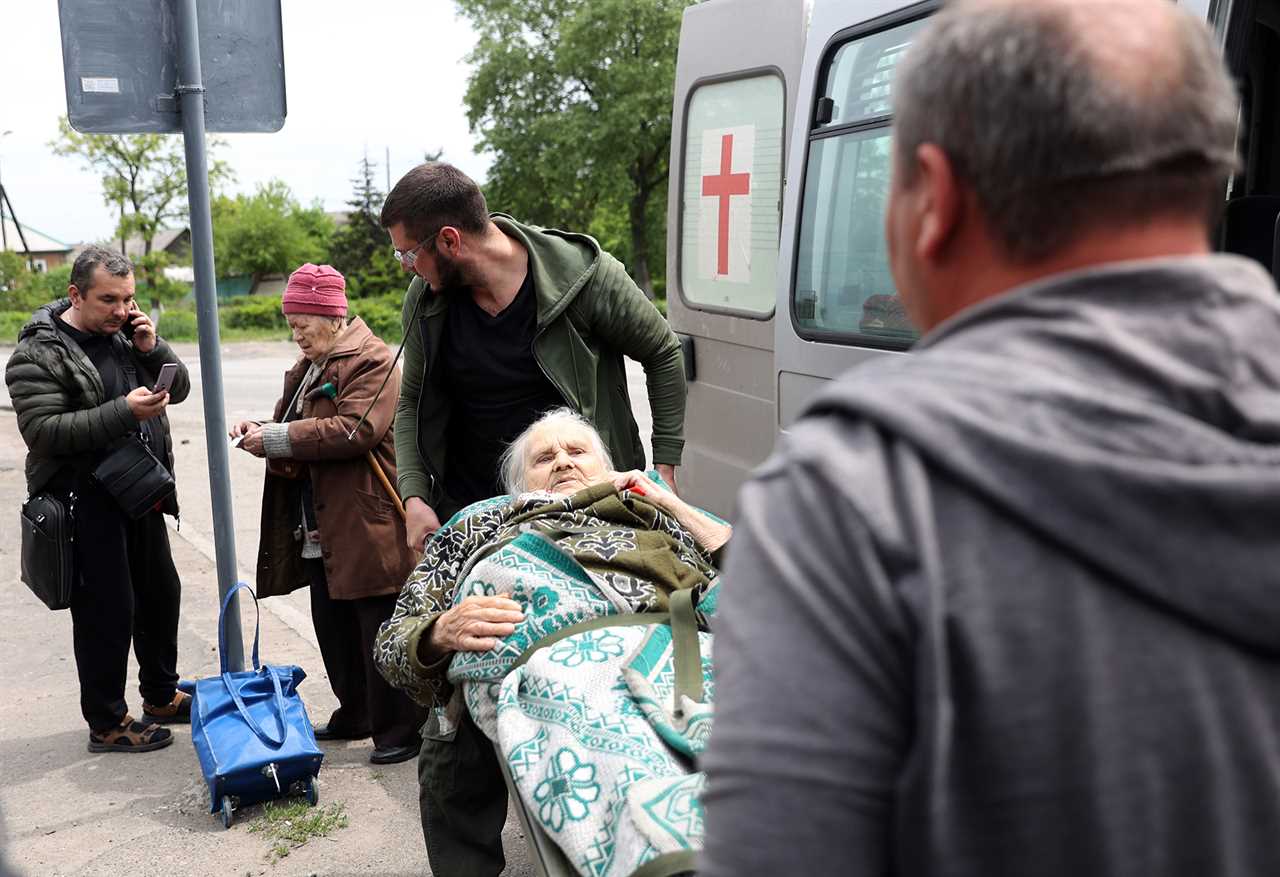
Among them was Nina Tykhomirova, 92, with lines drawn into her face like a map. In nearly a century of life, she’s endured a lot, including World War II and Soviet rule over Ukraine. Two large men carried her in a blanket from a van to Holtsyev’s ambulance. Her bright blue eyes and floral-patterned neck scarf betrayed the horrors she said she had witnessed: artillery shells crashing into her neighborhood, homes on fire, people cowering in fear in their vegetable cellars, bodies in the streets.
She was evacuated with nothing but a couple of sweaters wrapped around her fragile frame and a plastic bag with her personal documents that she gripped tightly in her left hand.
“Where am I going?” she asked, trembling.
“First, away from here, grandma. You will be safe,” Holtsyev said, closing the ambulance doors.
‘The city is already dead’
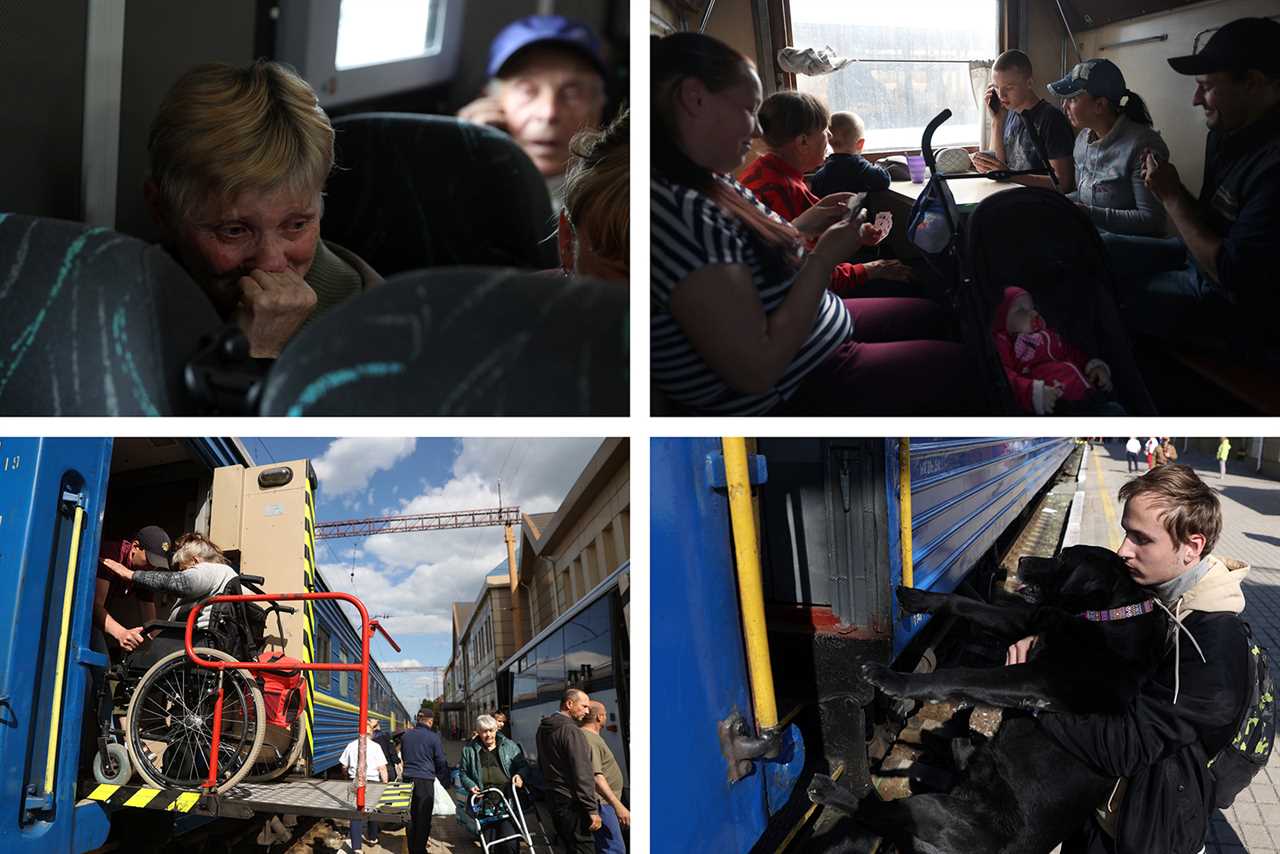
Under constant, heavy shelling, thousands of civilians in Ukraine’s east have been confined to the tenuous safety of basements and garden cellars for weeks or months. Time spent in the open means exposing oneself to weapons of war that figuratively and literally tear people apart.
Life under Russian assault is measured in minutes, steps and millimeters; the difference between life and death here has narrowed to a sliver. Those who try to flee do so at great risk to their personal safety; some interviewed by POLITICO during a week of reporting along the frontline described being forced to dash down contested roads while under fire or crawl through fields littered with landmines.
Others, like Tykhomirova, are too fragile to leave under their own power. Many more lack the means, whether money or a vehicle, to flee. Though disenchanted with the Ukrainian government for what some say is a lack of respect and attention paid to the eastern regions, almost no one wants to take their chance with the Russians.
Thousands have died while contemplating their meager options.
To be precise, between Feb. 24 and May 30, at least 4,149 civilians were killed, including 267 children, according to the U.N. Human Rights Office. The true numbers of civilian casualties are much higher but can’t yet be fully counted because of active fighting and lack of access to areas under the control of Russian forces, the organization added.
The deaths bring the total number of civilians killed as a result of Russian military aggression in Ukraine to more than 7,500 over the course of eight years. Prior to Feb. 24, 3,404 civilians had been killed in the war in the Donbas, which broke out in April 2014. A vast majority of those casualties occurred in the first nine months of the war, when the fighting was at its peak. Several ceasefire agreements that never fully materialized kept the fighting at a simmer, with each side trading pot shots from well-worn trenches.
Lyman, a once-quiet town surrounded by a forested nature reserve and the bone-white chalk mountains, was once home to 20,000 residents — more than 43 percent of which were ethnic Russians, according to local data — until people began spilling out in recent weeks. It had largely avoided hostilities, save for some street fighting with automatic rifles and grenade launchers in 2014.
Now it’s synonymous with Russia’s brutal new military campaign in the Donbas, demolished homes and shattered lives.
“We can never go back. There is nothing left there for us,” cried a woman brought to the Raihorodok staging area carrying several bags of clothing and possessions, her two young children in tow. “They are bombing everything. Our city is dying.”
Her husband interjected: “No, the city is already dead.”
The family, who declined to be identified, said their home had been partially destroyed in mid-May. They spent nearly two weeks living in a neighbor’s basement with little food and water, no toilet, electricity and gas until Holtsyev and the other rescuers came to pick them up. Everything they had to begin their new lives fit into four duffel bags. Asked about what they would do next and where they would go, the husband tried to speak but no words came out of his mouth; he just shook his head and shrugged.
Days later, on May 27, Russian forces declared Lyman captured.
No way to leave
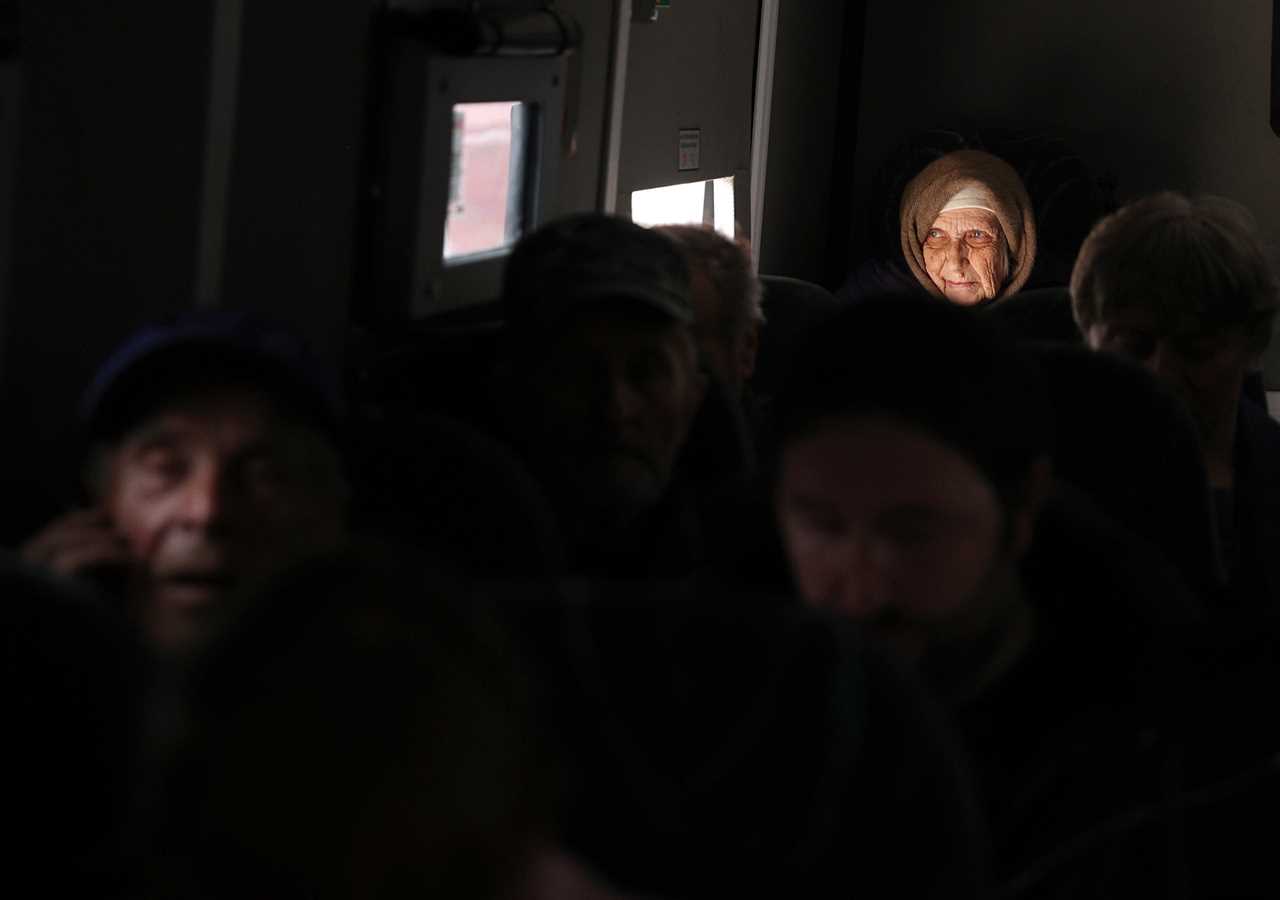
Ukrainian authorities began urging civilians to leave the Donbas in April when Russia announced it was shifting its focus to the east after running into a wall in northern Ukraine. Hundreds of thousands heeded the warning. But not everyone was convinced that the fighting there would be as intense as it has become or would spill into the places where it has.
“Many of the people who have remained in their homes even as the fighting approached simply had no way to leave,” said Angelique Appeyroux, head of operations for the International Committee of the Red Cross in Ukraine. The organization has managed to reach some of them and distribute food parcels, hygiene kits and blankets, and to resupply local hospitals with essential medical items.
Many stubborn residents have refused to leave their houses and their homeland behind. They argue there’s nothing waiting for them west of the Donbas, and they don’t trust that the government in Kyiv will help them rebuild their lives. Some feel abandoned by Kyiv and feel more affinity with Moscow.
One middle-aged woman who had accompanied her elderly neighbor to the evacuation point was catching a ride with rescuers returning to Lyman. She said she wouldn’t flee the town no matter what — her husband was buried in the cemetery there.
There are even some people who left the region weeks ago and have since returned. Kramatorsk Mayor Oleksandr Honcharenko said he has a “cabbage index” by which he and his staff can tell approximately how many residents are present in the city; the number of cabbages purchased is equal to a certain number of residents and their families. He noticed an increase in the past two weeks, suggesting, he said, “about 5,000 people returned.”
“Life on the run is immeasurably more expensive than at home, and people can quickly run out of resources,” Appeyroux said.
In the village of Mykolaivka, opposite Raihorodok and in the shadow of the Slovianska heat power station, Nina Strashko was surveying the remnants of her life, moments after an artillery attack destroyed her home.
The 83-year-old who walks with a cane had been enjoying a sunny May afternoon on her garden bench when a shell crashed into her cottage just 20 feet from her. Shrapnel sprayed everywhere, destroying a child’s swing in her neighbor’s yard and lashing the branches of the tree hanging over her. Yet somehow the razor-sharp pieces of Russian metal missed Strashko completely.
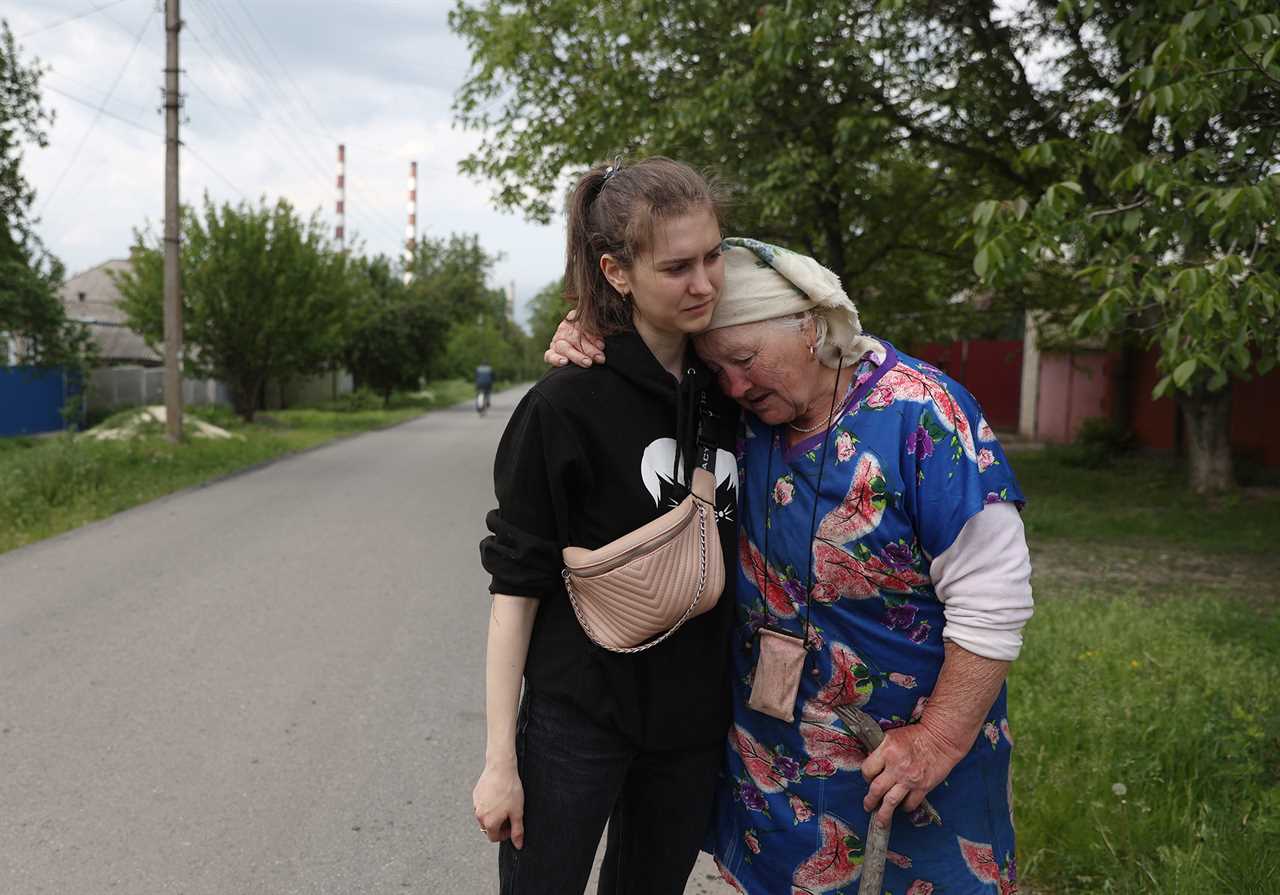
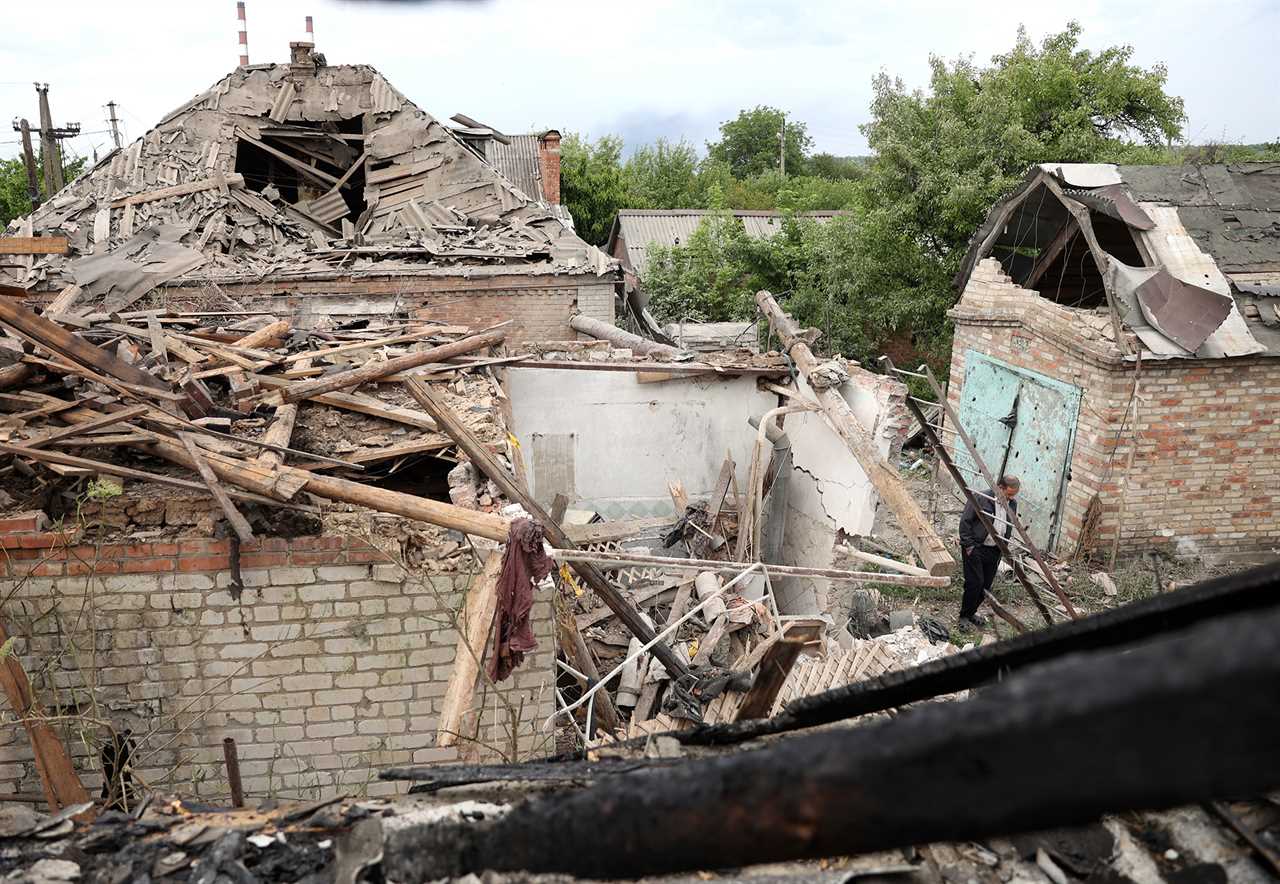
Luck or god or maybe both had saved her from death, said her son Ihor as he surveyed the damage.
“My home is gone. Everything is gone,” Strashko cried, laying her head on the shoulder of her granddaughter. The family was moving her to their house down the street — still in the line of Russian fire. The family said they couldn’t afford to leave and had no one elsewhere to ask for help.
And yet, they’re the lucky ones. Four of Strashko’s neighbors were much less fortunate. Two of them were killed and two more were badly injured by another shell in the same attack.
A train to somewhere
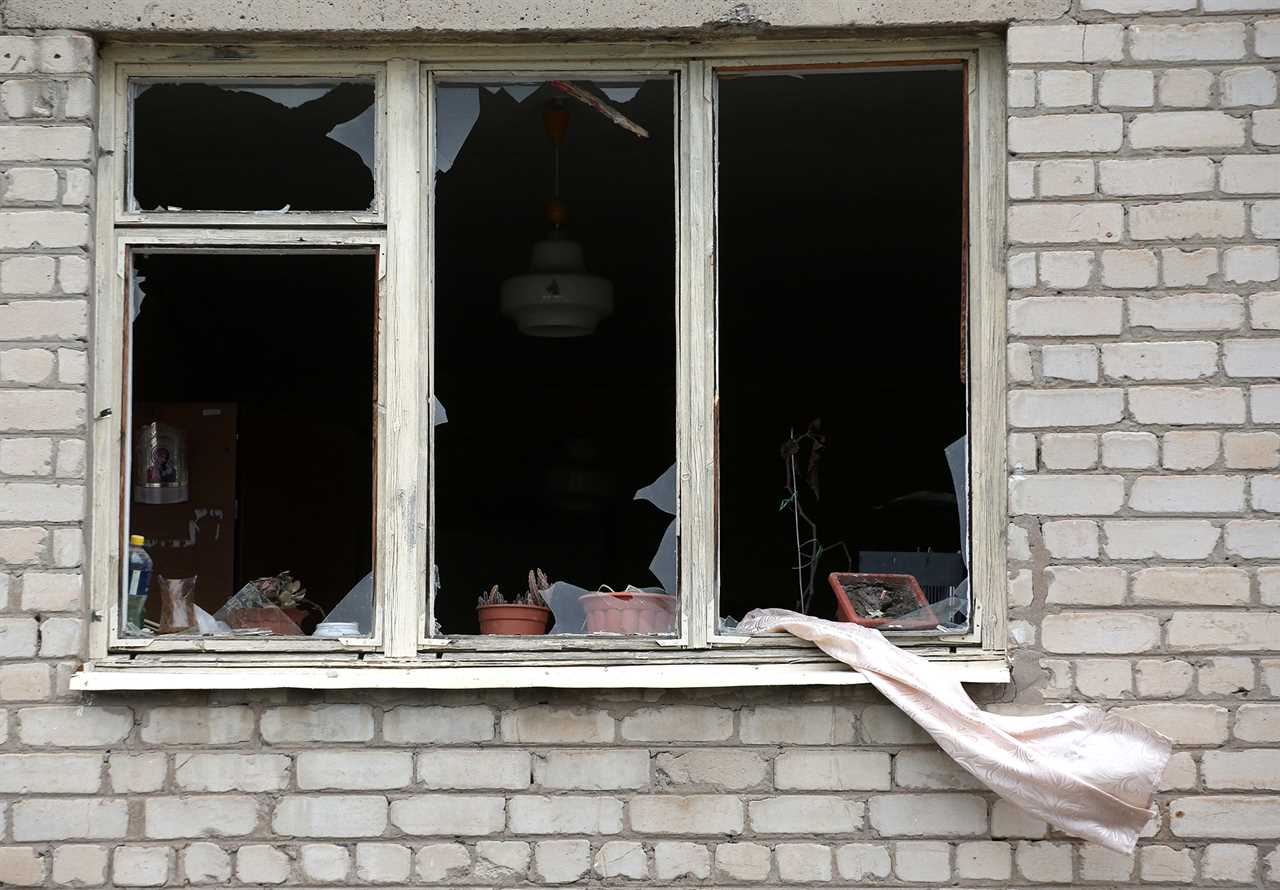
Twenty-five miles south, some of the 30,000 residents remaining in Bakhmut were in a similarly miserable situation. After Sievierodonetsk and Lysychansk — which the Russian military is bombarding to the east — the city stands in the way of capturing the rest of the Donbas. In the past two weeks, it has been hit with several Russian airstrikes.
One of them struck the Horlivka Institute for Foreign Languages on central Vasylya Pershyna St. The institute had been relocated from a neighboring city after Russian forces occupied it in 2014. Faculty and students weren’t present when the building was hit last month; Ukrainian military forces had apparently been using its lower floor and basement as shelter. The missile took half of the roof and several upper floors clean off, leaving a 15-foot-deep crater in its courtyard.

The strike also badly damaged an adjacent apartment building housing hundreds of civilians. Days after, Yelena, 55, searched for her potted plant, a little green succulent, in the rubble. Her apartment was among dozens that were destroyed. Yelena and 38 other residents now share two rooms in the damaged building’s basement. It’s tight quarters with no ventilation; mattresses and cots lay side-by-side, covered in blankets adorned with floral and animal patterns.
There is no toilet for them underground.
“We can be killed just going to take a piss!” grumbled Vitaly, over the rumble of explosions in the distance.
Many complained that local authorities had not come to check on their well-being or offer any assistance. They had canned food and preservatives stacked on one side of the room, enough for the next few days. But they were short on bottled water, they said, although there was a well nearby.
Volunteers have started evacuating people from Bakhmut and surrounding towns and villages. Most are taken by car, bus, or ambulance to Pokrovsk, 80 miles to the west, where they board an evacuation train that carries them west, away from the fighting.
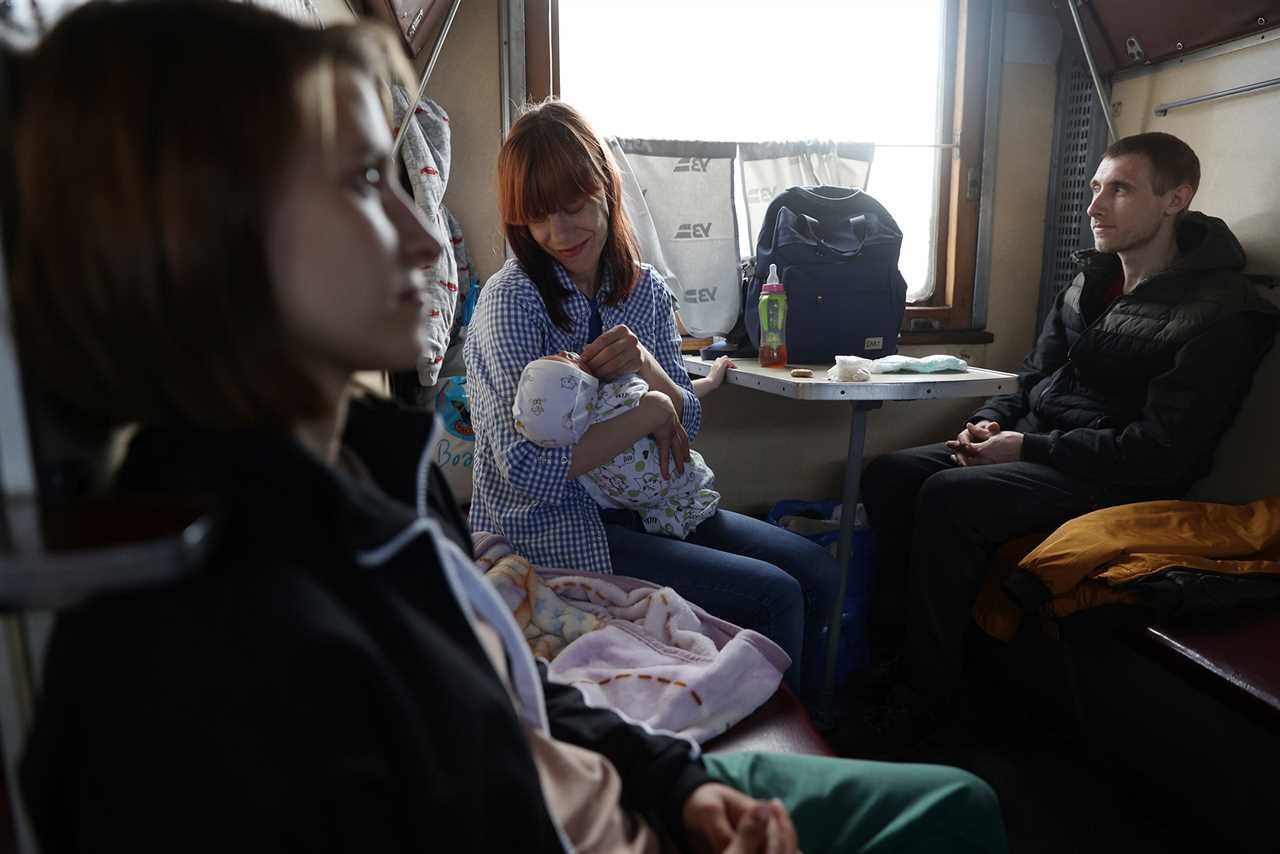
Last week, Kostyantyn, Yulia and their two children, including two-week-old Artem, were among 300 people on an evacuation train. Because the war had paused most local government services, Yulia said she hadn’t been able to secure a birth certificate for Artem yet. She said Toretsk, the frontline town from which they fled, had been without water for nearly three months and the electricity had been knocked out by shelling — which made giving birth especially difficult.
“We were sitting in our house and everything would just shake,” Yulia said. “I would wrap the baby in a blanket and run to the basement every time the shelling started.”

Yulia said that a shell that exploded on their doorstep was the final straw. They left with just a few bags and a stroller for their toddler.
“We will go to Dnipro,” Kostyantyn said, Ukraine’s fourth-largest city that has become a hub for humanitarian aid. “From there, we don’t know.”
----------------------------------------
By: Christopher Miller and Photographs by Anatolii Stepanov
Title: ‘Everything is gone’: Eastern Ukraine residents say Russia is wiping their towns off the map
Sourced From: www.politico.com/news/2022/06/03/eastern-ukraine-residents-russia-00036854
Published Date: Fri, 03 Jun 2022 03:31:00 EST






